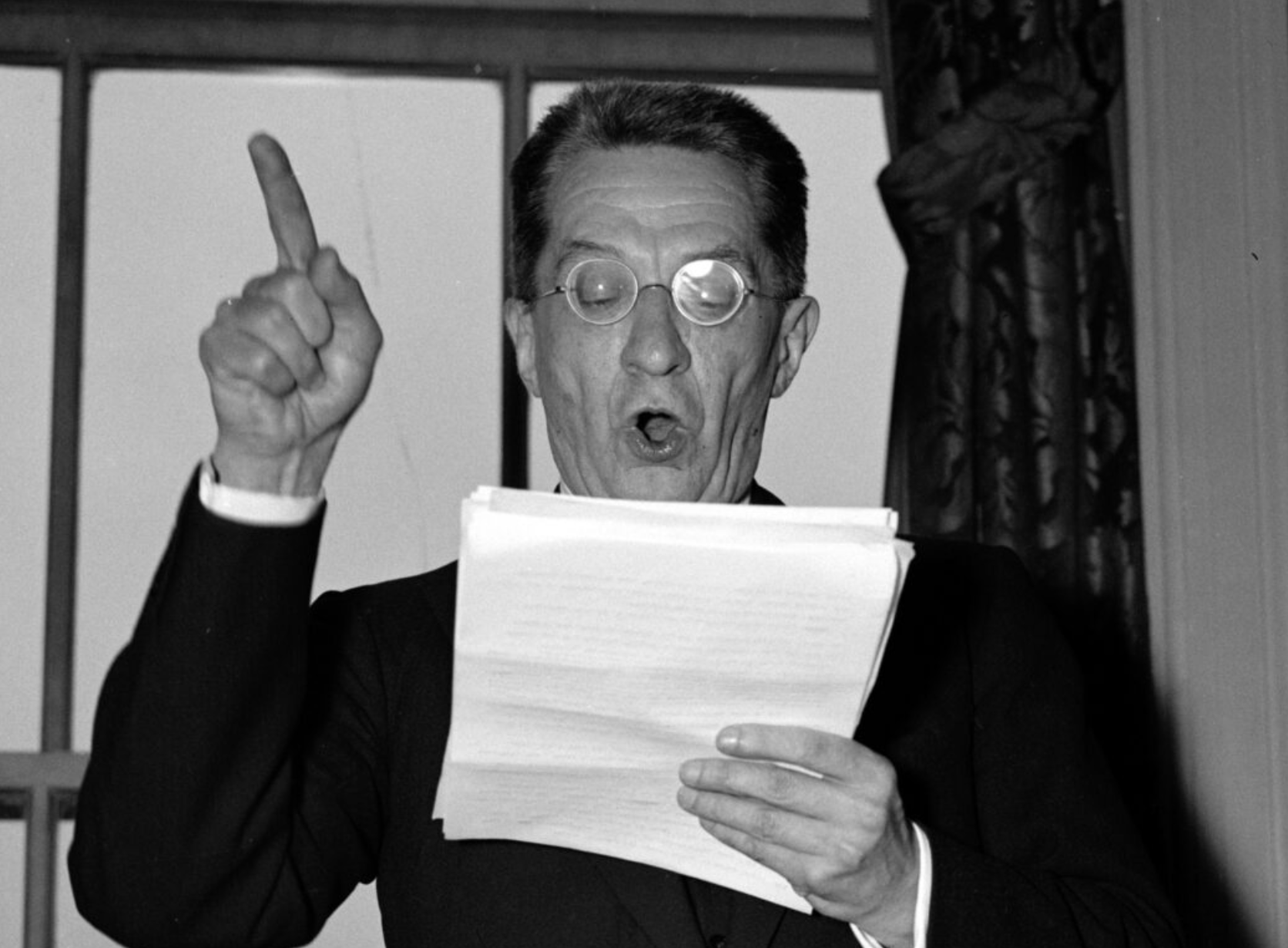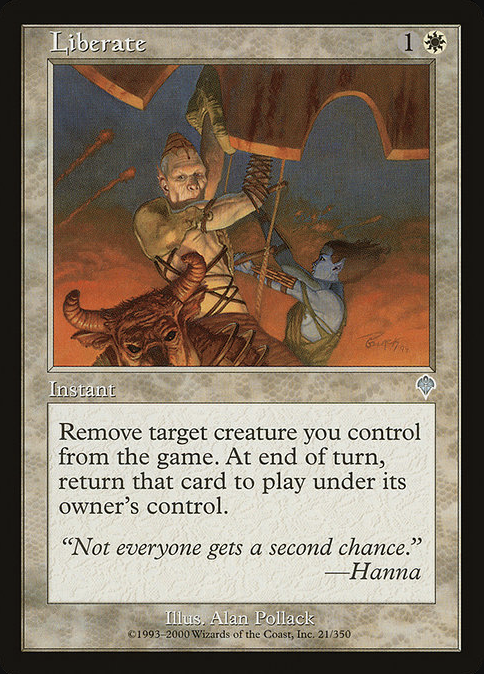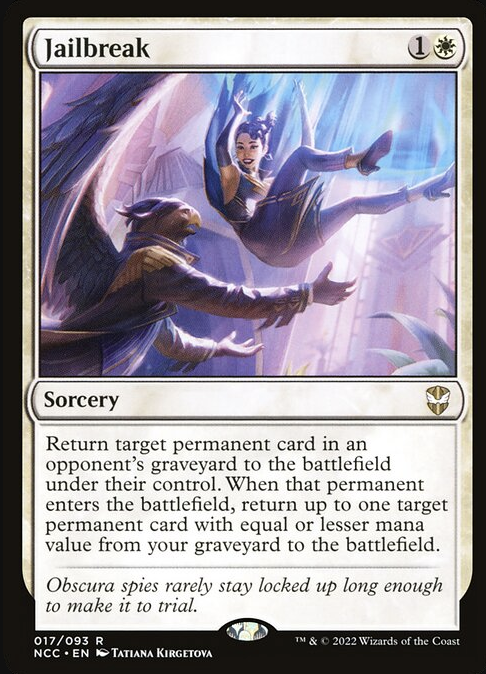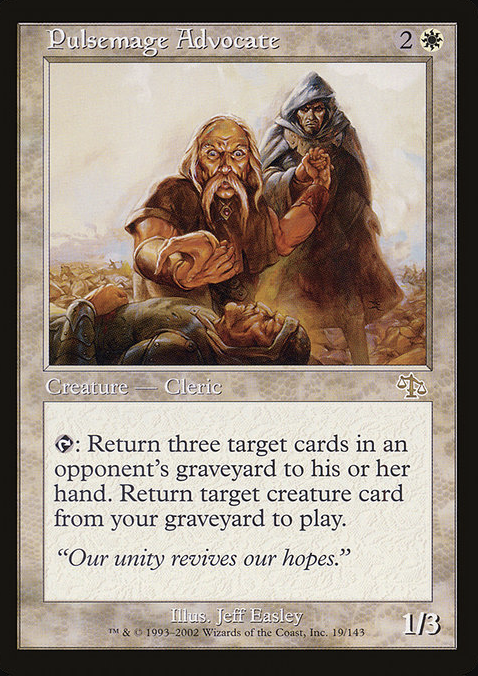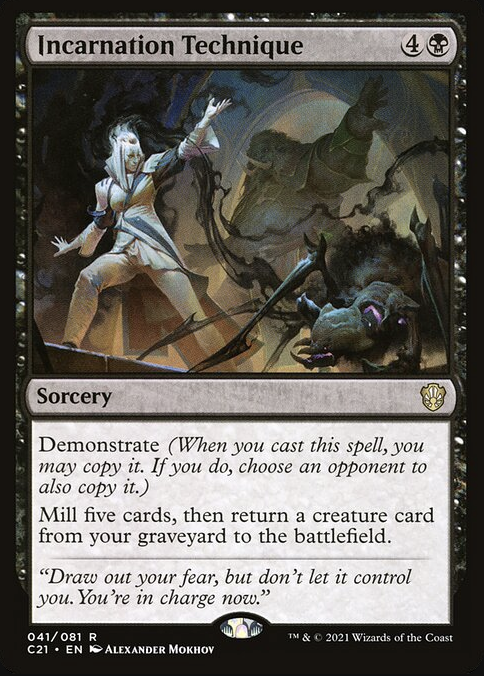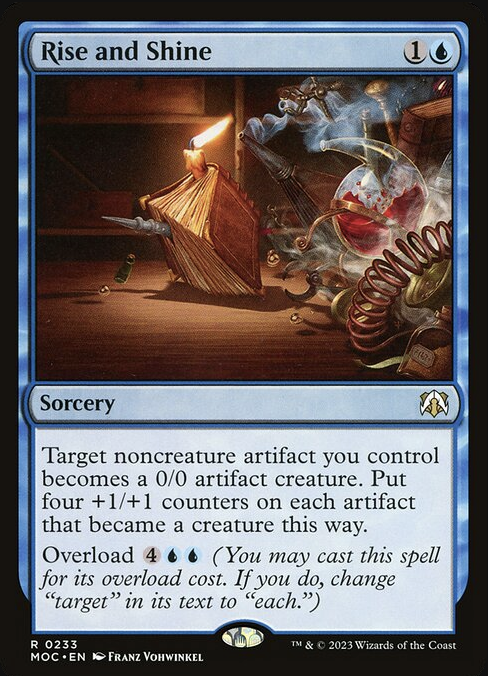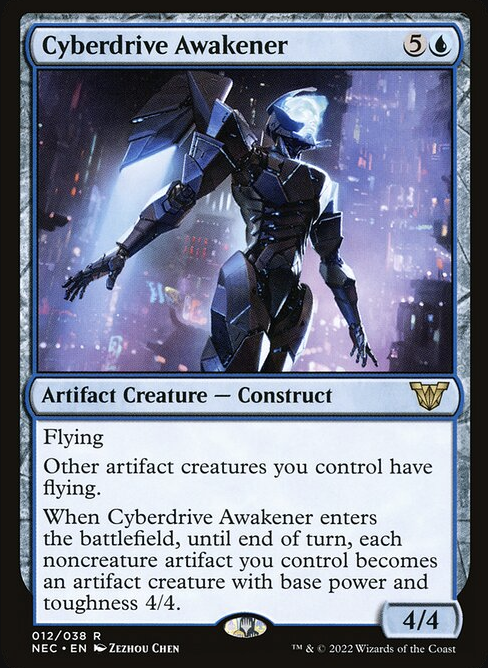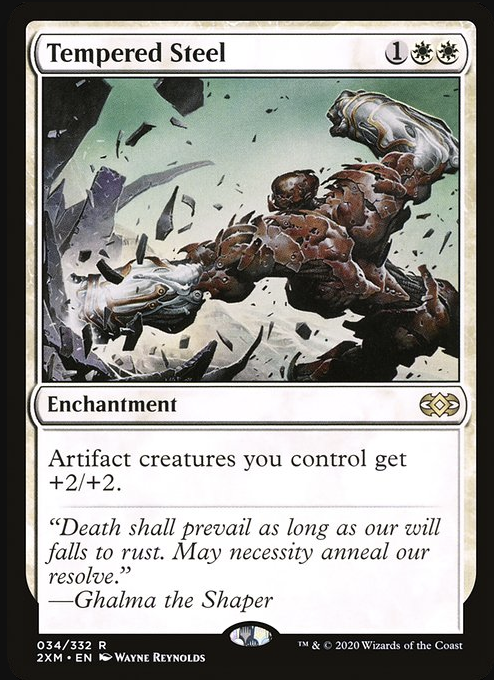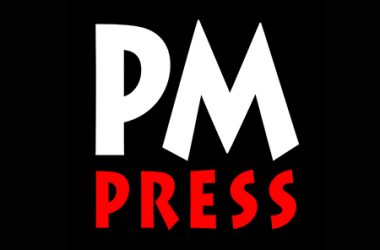What Would They Play? •
Commanders Hearld
May 30th, 2023
Welcome to What Would They Play?
I’m Charlie, I’m a storyteller, creative writer, and author; I handle the historical sections of the articles.
And I’m Dan, a Commander player who is obsessed with building thematic decks. I connect the stories to Magic cards to create decks that reflect the vibrant tales of the past.
We take famous or not-so-famous figures from history and make Commander decks based on their lives, philosophies, and histories.
Our articles are meant to be part history lesson, part deckbuilding guide. We believe that decks can be expressions of personal philosophies, so a fun way to learn about historical figures — and flavorful brews — would be to speculate about what sort of Commander deck a given person would play, given their times, opinions, and philosophies.
It’s like a history class, only using the medium of Magic: the Gathering.
This is meant to be an accessible glimpse at the people in question, not a rigorous or definitive biography; we have sources at the end of the article for that!
Let us begin!
Who Was Alexander Kerensky?
Alexander Kerensky (1881-1970) was a former Tsarist official, Minister of Justice of the Provisional Government that succeeded Nicholas II’s government, and then briefly the Prime Minister of that Provisional Government until October of 1917. Politically, he was a member of the Socialist-Revolutionary Party1, which believed that instead of a tsarist autocracy, the Russian Empire should become a constitutional republic. Kerensky had some sympathy for revolutionaries but not enough to actually be one despite the party title.
Bourgeois democracy–government by rich elected officials and the upper-class while retaining the right to private property2–was both the name of the game and the goal, as far as Kerensky was concerned. This would make him the equivalent of a center-left Democrat in modern America.
Being a part of Russia’s first democratic (but not too democratic) government, Tivit, Seller of Secrets is an appropriate choice of commander for Kerensky. The trappings of democracy are present in the deck, with cards like Council’s Judgment, Magister of Worth, and Capital Punishment putting things to a vote, but Grudge Keeper, Illusion of Choice, and Tivit themself ensure that all power does not go to the soviets.
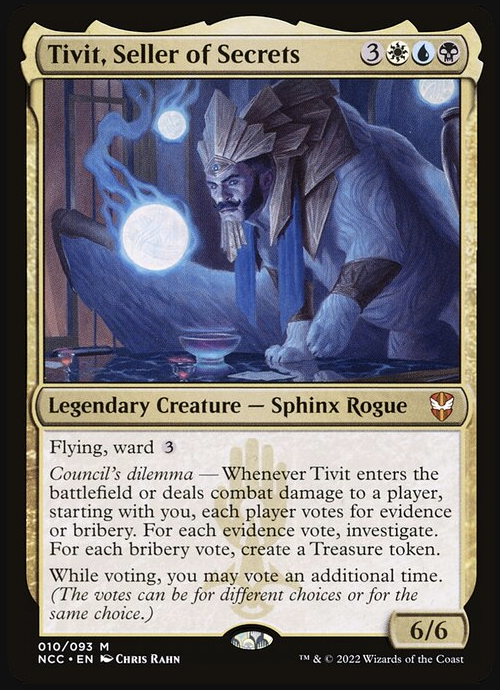
The long wound of WWI, combined with numerous scandals and widespread strikes where the soldiery sided with the common people, eventually resulted in the abdication of Tsar Nicholas II in February of 1917. He took off his crown and went into exile, and nothing bad happened to the Romanovs ever again.
A Constituent Assembly was convened! The three-hundred-plus-year reign of the Romanov dynasty was finally over! Throw your hats in the air!
Newly made Minister of Justice Kerensky had a lot on his plate, and so he made the first (maybe only) good decision of his brief time in power.
Liberating the Prisons (February-March 1917)
One of the first things Kerensky did upon ascending to power, according to at least one source3, was to pull aside some journalists in Petrograd and ask them to find the grave of Grigori Yefrimovich Rasputin and to “destroy it without any noise” to prevent tsarists from making it a holy spot or rallying point. It does sound in character for Kerensky to order such a thing.4
Seriously, though, the first order of business was to release all political political prisoners followed by an amnesty. Kerensky got to play this off as a deliberate choice instead of something that was demanded by the workers in the streets. Nevertheless, he granted it.
Anarchists, Bolsheviks, Mensheviks, SRs, everyone who had been locked up for being accused of having (or actually having) revolutionary tendencies–they were now set free! The Russian Empire had a thriving business making political prisoners and harassing the families of said prisoners; there was widespread sympathy for them, in short.
Kerensky’s deck is equipped to grant amnesty both to his own creatures and his opponents’. Flicker spells, like Liberate, will save Kerensky’s creatures from all sorts of harm (bonus flavor points for using Liberate to remove a Prison Term or Arrest), as well as generating value with voting creatures, like Tivit and Custodi Squire
One of the countless political prisoners released was a man I know a little something about (because I wrote a whole book about him): Nestor Ivanovich Makhno, a Ukrainian anarchist in Moscow; up until very recently he’d been serving a life-sentence. Makhno describes it like this in his memoirs:
“The Socialist-Revolutionary A. Kerensky, the minister of Justice, rapidly acceded to this demand of the workers. In a matter of days, all political prisoners were released from prison and were able to work among the workers and peasants, work which they had started during the difficult years of underground activity.5“
This was a shrewd move by Kerensky: it won him a lot of popular support at first and served to distance the role of the Provisional Government from its tsarist predecessor. In Commander, Kerensky can similarly win some goodwill by letting his opponents recover cards from their graveyards. Jailbreak is the marquis card for this theme, but the Judgment gems Pulsemage Advocate and Spurnmage Advocate deserve mention as well. Incarnation Technique and Infernal Offering also fit the theme in black. The idea is to make allies while also furthering his own goals.
Tsar’s Gone, but the War Is Still On! (Feb-October 1917)
I refuse to apologize for that terrible rhyme.
Kerensky ascended still farther up the ranks, becoming the Minister for War in May. He was an inspiring speaker, but no amount of inspiring speeches can make an army that’s been through hell for three years want to sign up for more. Desertions were common, public opinion in the shitter, shortages frequent.
Indeed, Kerensky’s–and the Provisional Government’s–continuance of the war was the absolute weak point of their rule. The right wing of the government and military wanted to continue the war (but hated that Kerensky’s Provisional Government had abolished in part the tsarist officer corps–viewed as the most reactionary part of the military–in favor of soldier’s soviets–councils), and almost everyone else just wanted it to stop, period. A bad peace, the thinking went, was surely better than this horrible, grinding hell.
But Kerensky, now Minister of War, refused to budge on this point. Not continuing the war was not on the table. Kerensky mobilizes for war at the Commander table by animating the Clue and Treasure artifact tokens created by Tivit. Since they make so many, Rise and Shine and Cyberdrive Awakener (another great flicker target) can make a huge army out of nowhere. Workshop Elders and Kenku Artificer (repeatedly flickered) can do this too, though not as quickly. Tempered Steel, Master of Etherium, and Steel Overseer can supercharge that army.
Naturally, continuing this policy of keeping the Russian Empire in WWI was deeply unpopular, on the front and at home. Most Russians had hoped with the abdication of the tsar that the war would be ended. This had proved not to be the case: Kerensky refused to abandon Russia’s commitment to the Allied cause. This was crippling to the legitimacy of his government.

First, the left wing (anarchists, trade union workers, members of the military, etc.) rebelled against the Provisional Government in Petrograd in massive protest from 3-7th of July. The Provisional Government replied with machine gun fire and repression that would have made the tsar proud.
To quote one Rostov-on-Don anarchist, writing some months later: “So what happened? Nothing special. In place of Nicholas the Bloody, Kerensky the Bloody has mounted the throne…”
Kerensky had shown that he was willing to use force, same as the tsar, to hold onto power.
The Bolshevik leadership only lukewarmly supported the July uprisings, with Trotsky being arrested and Lenin–after making a dithering, largely incoherent speech that moved nobody in the crowd of militant workers–fled to newly-independent Finland, to slink back later.
As a reward for his handling of the July days, Kerensky became Prime Minister of the Provisional Government. In August, the Provisional Government also put down a right-wing coup attempt by General Kornilov without much trouble. All seemed to be going well, except for all the parts that were falling apart.
Dithering to Death (July-October 1917)
Kerensky and the provisional government kept “playing for time“, to use the words of historian Alexander Skirda, though to what purpose? The lack of a clear reason that didn’t rely on abstractions (supporting the Allies) to continue participating in WWI made Kerensky hated by everyone.
Kerensky’s delaying tactics appear in his deck as tap and stun effects, like Press for Answers and Sleep. Some of these are on creatures’ enter-the-battlefield abilities, like Frostfist Strider and Spire Patrol, playing well with the blink theme from above. Junk Winder works especially well with the commander, repeatedly tapping down five or more permanents each time Tivit’s ability triggers. Sunblast Angel, Theft of Dreams, and Time of Ice provide nice payoffs for all this tapping.
The Provisional Government kept Russia in the war despite every possible indicator (and promise) pointing toward that being a bad idea. He played for time, hoping a solution would fall into the government’s lap. Anything but have to make a decision and stick with it.
Then the October Revolution came, and Kerensky fled just as quickly as Nicholas II did (he ultimately ended up in Stanford, California, of all places). We’ll cover that more in the next article.
Alexander Kerensky’s full Commander decklist is below!
…But Not TOO Democratic: Alexander Kerensky’s EDH Deck
What Would They Play? is a collaboration between author Charlie Allison and game designer Dan Sibley. The series is part history lesson, part deck-building journal and aims to bring historical figures back to life through the lens of Magic: The Gathering. You can find Dan on Twitter at @VedalkenSamurai and Charlie on the web at www.charlie-allison.com and https://blog.pmpress.org/authors-artists-comrades/charlie-allison/.
Check out Charlie’s forthcoming book:


